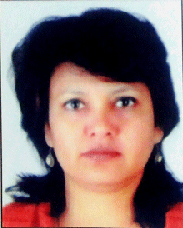 Indian
Indian doctors have occupied the pride of place in the medical fraternity of the western world and are acknowledged as respected and influential clinicians. Indian doctors were able to reach such level of excellence because of a robust and exhaustive basic training in the country. Despite poor local infrastructure and poverty of the country, the vast clinical exposure of Indian medical graduates gave them a tremendous advantage over doctors of the rest of the world.
In the coming time, Indian doctors may not retain their position as a significant and vital clinical force in the world, as meritorious students are no longer opting for the medical profession in India. Biology sections are disappearing from higher secondary schools as there are few takers for the medical stream.
India is woefully short of healthcare providers today. On 31 March 2017, the Medical Council of India had 10,22,859 registered medical practitioners on its rolls. There is just one doctor for 1640 people in India, presuming that about 80% of the registered doctors remain in active clinical practice. Although effort has been made to augment the medical training infrastructure in the country, it is insubstantial when one considers the burgeoning population. Governments have been indifferent to expanding health care facilities and workforce. The health budget of the country has shrunk in real terms, and the state seems determined to shift medical education to the private sector.
Government-funded hospitals are few, poorly administered, have financial limitations and have staffing constraints. Paramedical staff in hospitals are inadequately trained, and the entire healthcare process is doctor-centric. Work customarily assigned to paramedics, such as collecting blood samples, is performed by junior doctors in India. The patient load is immense and an average doctor, in the out-patient department, spends only two minutes with a patient. The quality of care thus suffers, and patients remain discontented. A patient-doctor relationship does not establish, and this promotes mistrust. Doctors are regularly subjected to physical violence as they have lost the confidence and trust of the society. The poor public image of doctors is discouraging students from choosing the medical profession.
In 2016, about 43,000 students joined the MBBS course in India, out of which 55% joined private medical institutions. The cost of government-sponsored medical education, for the four and a half years MBBS course, is just Rs 30,000 (plus subsidised boarding and lodging). Private medical school costs 233 times more, that is Rs 70 lakhs (excluding the cost of boarding, shelter, and study material). Almost all private medical schools in India belong to politicians.
As private medical schools are beyond the reach of the general population, only the wealthy study there and aptitude is not necessarily an eligibility criterion. Seats in these colleges are vacant due to the high cost. Despite the high cost, medical education in most Indian private medical institutions is sub-standard, as qualified teaching staff and clinical material are inadequate. There is 50% caste-based reservation in medical schools, which dilutes merit further.
The government has recently made it compulsory for all medical schools to run post-graduate courses. The medical schools are not mandated to ensure availability of adequate teaching staff or clinical material nor is a quality inspection by a regulatory body mandated. There is a misconception, amongst the politicians and the public, that India only requires specialist doctors and that general practitioner are not needed. The breed of general practitioners is thus vanishing in India. There is an over-emphasis on specialisation and super-specialisation.
Institutions have introduced three-year super-specialisation degree programs in secondary branches, which deserve no more than a 6-month long fellowship program to develop reasonable expertise. A significant pool of qualified practitioners thus remains trapped in such irrational education programs.
- The writer is Director, Department of Anesthesia, Max Smart Super Specialty Hospital, New Delhi. Views expressed in the article are his own.
 Indian doctors have occupied the pride of place in the medical fraternity of the western world and are acknowledged as respected and influential clinicians. Indian doctors were able to reach such level of excellence because of a robust and exhaustive basic training in the country. Despite poor local infrastructure and poverty of the country, the vast clinical exposure of Indian medical graduates gave them a tremendous advantage over doctors of the rest of the world.
Indian doctors have occupied the pride of place in the medical fraternity of the western world and are acknowledged as respected and influential clinicians. Indian doctors were able to reach such level of excellence because of a robust and exhaustive basic training in the country. Despite poor local infrastructure and poverty of the country, the vast clinical exposure of Indian medical graduates gave them a tremendous advantage over doctors of the rest of the world. 